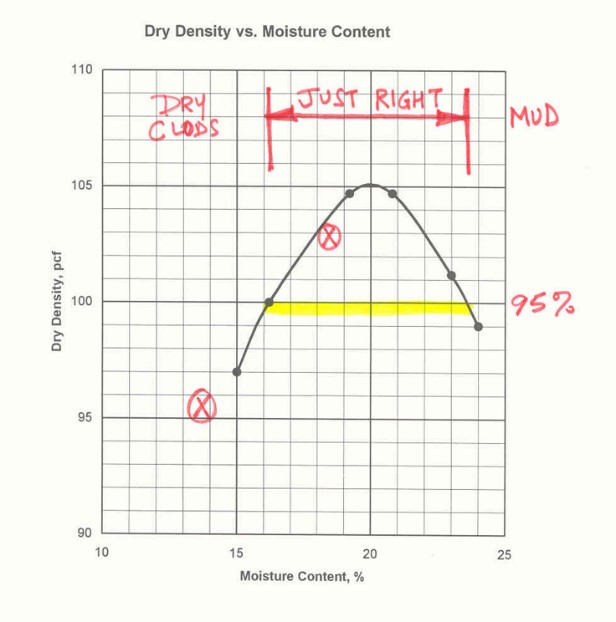Soil Compaction Primer
We have been shaping the earth to suit our needs ever since we stopped being hunter-gatherer nomad folk. Properly shaping the ground and making sure it stays the way we intend requires moving soil and compacting soil. Some call it “dirt”. Dirt is the stuff under your fingernails. When we use it as an engineering material, we better call it soil.
Looking at it closely, soil is more than just what we see. Soil is actually a mix of solid particles, air, and water. When we compact soil we primarily remove some of the air from the mix, densifying the solid particles by reducing the space between them. Although compacting soil is easy, compacting soil properly requires a little more than just rolling it or pounding it.

 Soil is a material which has to be at the proper moisture content to facilitate compaction. If we think about it, when the soil is too dry it is very difficult to compact because there isn’t enough moisture to hold the solid particles together. In contrast, if the soil is too wet, most of the void spaces in the soil matrix are occupied by water, which is incompressible – so we can roll or pound on wet soil until the cows come home and never achieve the results we need.
Soil is a material which has to be at the proper moisture content to facilitate compaction. If we think about it, when the soil is too dry it is very difficult to compact because there isn’t enough moisture to hold the solid particles together. In contrast, if the soil is too wet, most of the void spaces in the soil matrix are occupied by water, which is incompressible – so we can roll or pound on wet soil until the cows come home and never achieve the results we need.
For every soil there is a “sweet spot” at which the material achieves the greatest density when compacted. The sweet spot has two components: the optimum moisture content and its corresponding maximum dry density. The sweet spot is determined in the laboratory by performing a Proctor test.
Unlike professional golfers, graders are not expected to hit the sweet spot every time. In reality, a “sweet range” is specified, typically 95 percent of the Proctor maximum dry density. Laboratory testing to determine the soil’s sweet spot, and field testing to verify that the grader is hitting within that sweet range, are part of the many tests and services Geo-Hydro provides for our clients. With a little knowhow and testing, we help make sure that once the ground is shaped as intended, it will stay that way.
